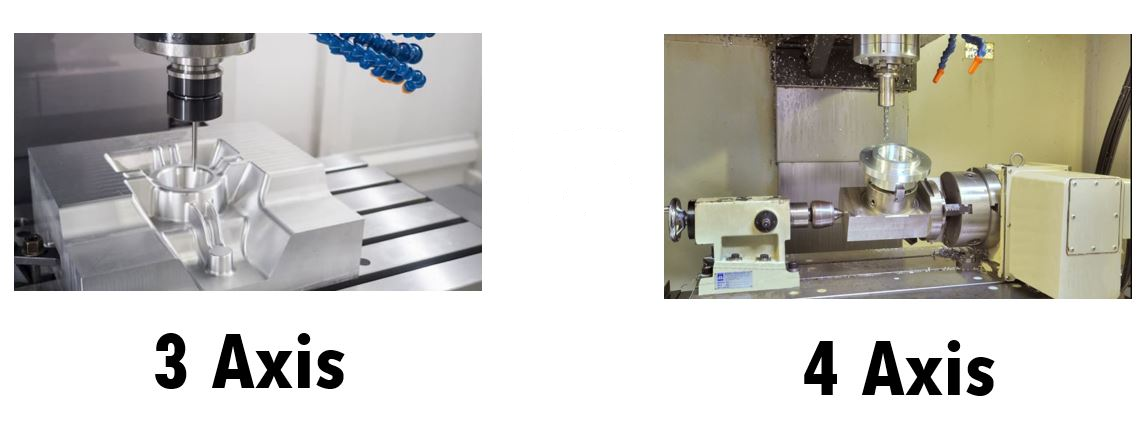
- English
- Español
- Português
- русский
- Français
- 日本語
- Deutsch
- tiếng Việt
- Italiano
- Nederlands
- ภาษาไทย
- Polski
- 한국어
- Svenska
- magyar
- Malay
- বাংলা ভাষার
- Dansk
- Suomi
- हिन्दी
- Pilipino
- Türkçe
- Gaeilge
- العربية
- Indonesia
- Norsk
- تمل
- český
- ελληνικά
- український
- Javanese
- فارسی
- தமிழ்
- తెలుగు
- नेपाली
- Burmese
- български
- ລາວ
- Latine
- Қазақша
- Euskal
- Azərbaycan
- Slovenský jazyk
- Македонски
- Lietuvos
- Eesti Keel
- Română
- Slovenski
- मराठी
- Srpski језик
How to choose between 4axis and 3axis CNC machines?
2023-11-10
 In the manufacturing industry, CNC machine tools are necessary tools that are effective in improving productivity and production quality. However, there are some key factors that should be considered when selecting a machine tool.
In the manufacturing industry, CNC machine tools are necessary tools that are effective in improving productivity and production quality. However, there are some key factors that should be considered when selecting a machine tool.
The first consideration is part precision and accuracy. Generally speaking, 4-axis machines are more capable of meeting high accuracy requirements than 3-axis machines. This is due to their ability to control the movement of all three axes more consistently.
Secondly, the complexity of the part needs to be considered. If very complex parts are to be machined, then a 4-axis machine is more suitable. A 4-axis machine is capable of more movements and is better able to machine more complex shapes.
Also, consider the size of the part. If larger parts are to be machined, a 4-axis machine is a better choice. It is able to accommodate different sized workpieces and can produce higher accuracy.
Another very important factor is durability. A 3-axis machine is better suited for light-duty, high-speed machining. This is because it allows for the use of smaller cutter heads and reduces the vibrations generated during machining.
Finally, the type of tooling used should be considered. A 3-axis machine is more suitable for parts that are machined using soft tools such as abrasive belts, milling cutters, spindles and drilling fixtures. This is because soft tools are more flexible and easier to machine. Four-axis machines, on the other hand, are more suited to using harder tools.
Overall, the choice between a 4-axis or 3-axis CNC machine needs to take into account the complexity of the part to be machined and the level of accuracy required. If complex parts need to be machined with a high level of accuracy, then a 4-axis machine is a better choice. Conversely, if simple parts need to be machined and you want something more affordable and accessible, then a 3-axis machine is a better choice. The final decision should depend on the needs of the specific project.



